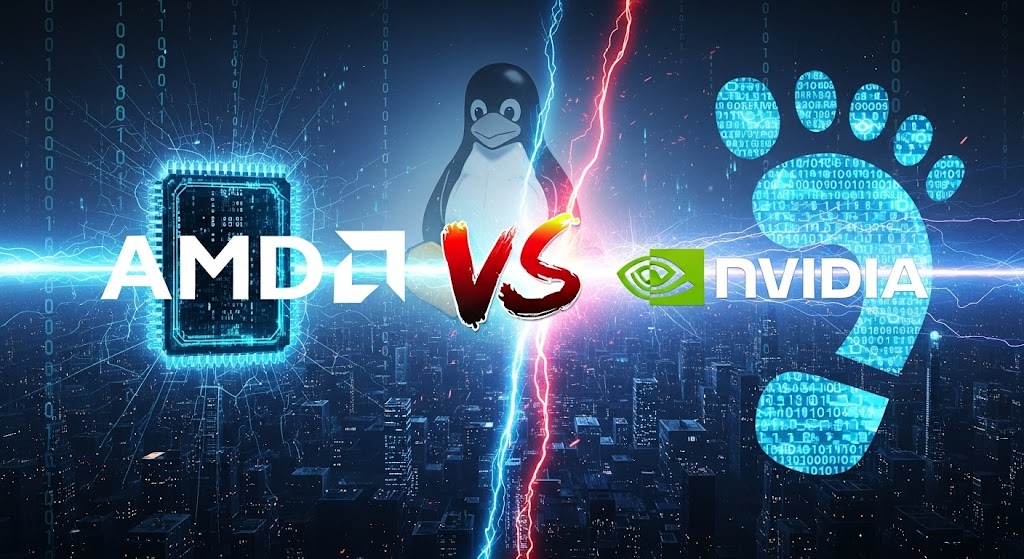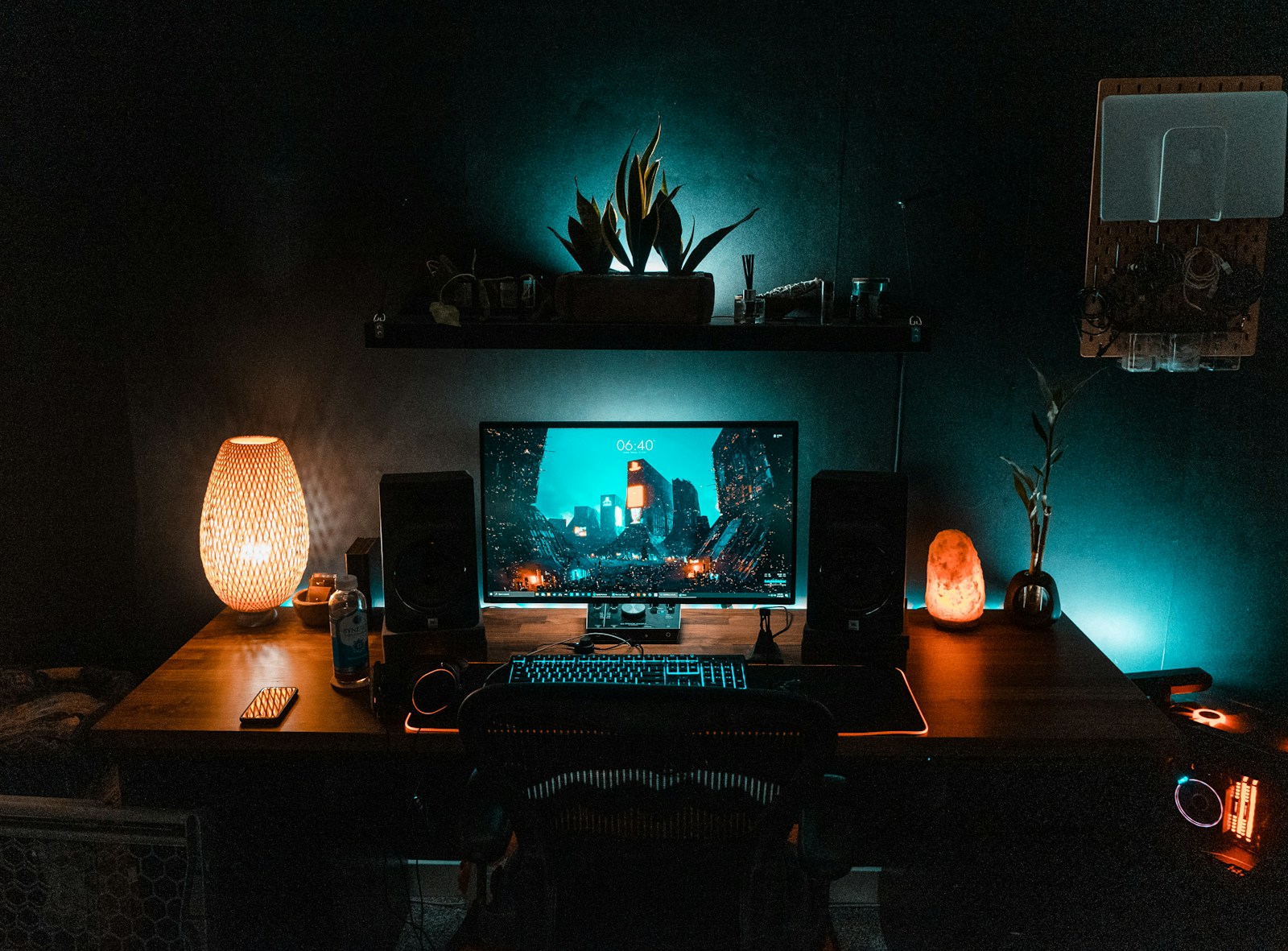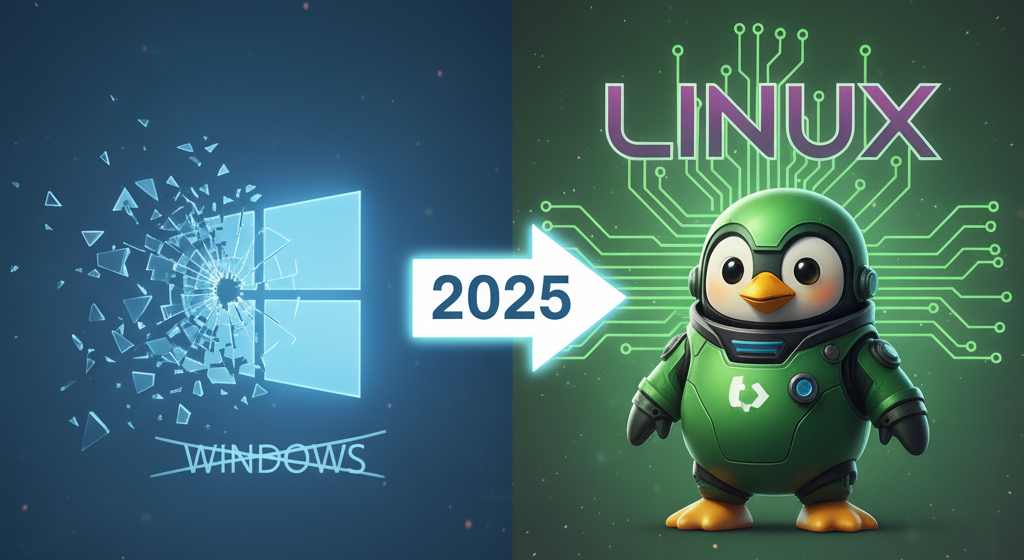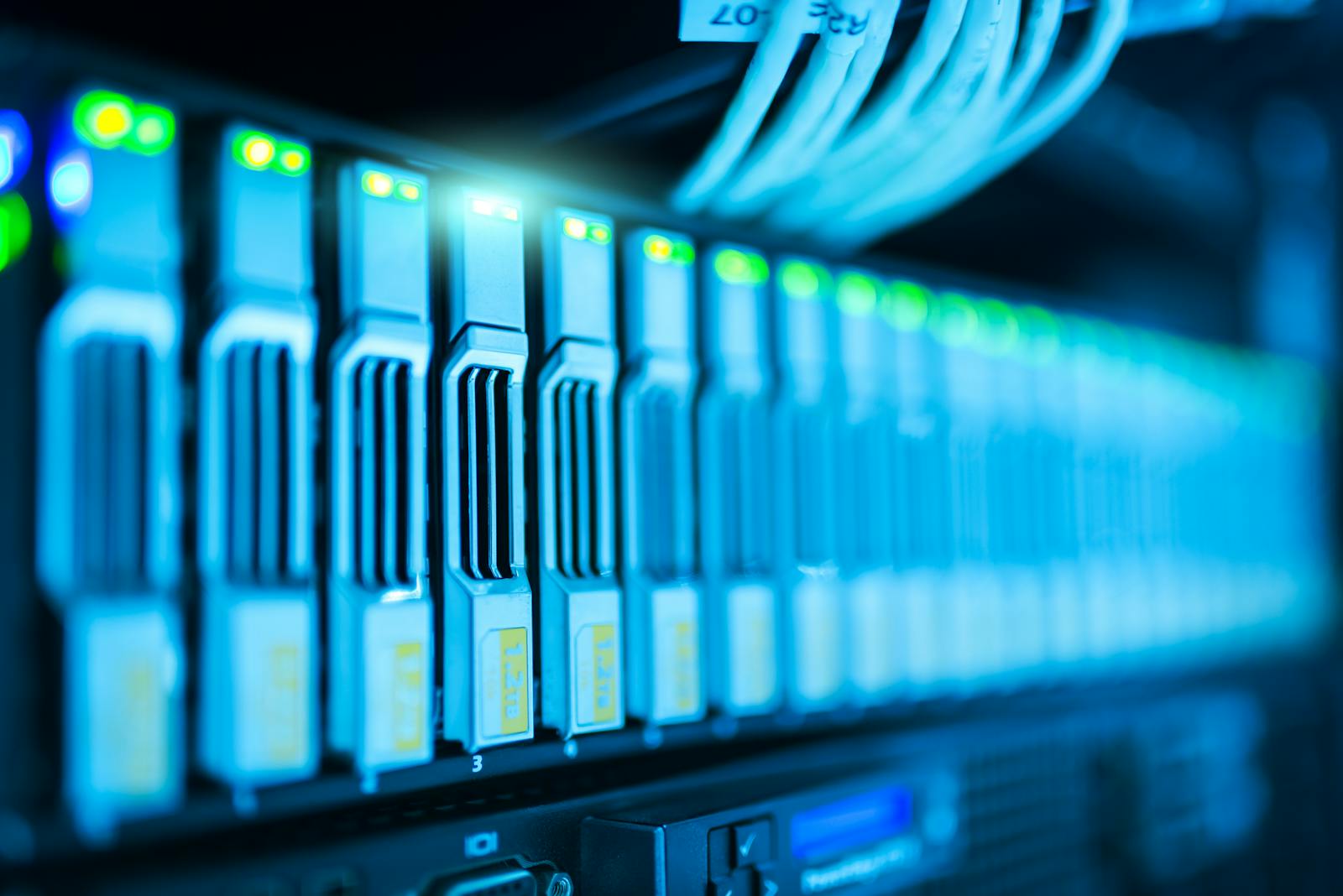I remember a late-night server deployment back in 2012. Everything was perfect until we hit a kernel panic. The culprit? A freshly updated kernel that had a blood feud with the proprietary NVIDIA driver we were using for some CUDA-accelerated task. We spent hours in a cold data center, manually rebuilding modules, cursing Linus Torvalds for being right, and vowing to never get caught with our pants down again. That night taught me a lesson that’s truer than ever: on Linux, your graphic card choice isn’t just about FPS; it’s a philosophical statement and a bet on your own sanity.
You’re here because you’re staring at two boxes—one red, one green—and you’ve heard the horror stories. You want to know which graphic card will give you glorious performance and which will make you want to rm -rf / your own machine. The amd vs nvidia on linux debate is a religious war, but I’m here to give you the practical, no-bullshit intelligence report so you can pick your side. Let’s get to it.
Your Cheat Sheet for the AMD vs. NVIDIA on Linux Battle
Look, I get it. You’ve got a system to build and games to play. If you want the quick and dirty answer without the technical foreplay, here it is. Your choice depends entirely on who you are and what you do.
- The “It Just Works” User: You want a stable desktop for browsing, maybe some light gaming, and you want to spend exactly zero time troubleshooting your display. Your pick is AMD. The
open source driveris baked right into the Linux kernel. On most major distributions like Ubuntu, Fedora, or Pop!_OS, you install the OS and you’re done. No driver installs, no black screens, no bullshit. It just works.
- The Hardcore Linux Gamer: You live on Steam, worship Gaben, and tweak Proton-GE settings for fun. This is a toss-up, but the lines are clear.
- For the best price-to-performance in traditional games (we call this rasterization), AMD often wins. You’ll frequently get more raw horsepower for your dollar, especially in the mid-range.
- If you crave the absolute best Ray Tracing and the most mature AI upscaling, NVIDIA is your champion. Their DLSS technology is still the gold standard, and it can turn an unplayable, ray-traced slideshow into a smooth experience.
- The Content Creator & Streamer: Your rig is your livelihood. You’re doing
linux video editingin DaVinci Resolve, rendering complex scenes in Blender, or streaming your gameplay on OBS. Lean heavily towards NVIDIA. The NVENC hardware encoder is the undisputed king for streaming quality and performance, putting less strain on your system than AMD’s alternative. Furthermore, CUDA acceleration in professional apps is a massive, tangible advantage that will save you time and money.
- The AI/ML Developer & Data Scientist: Let me make this simple. Don’t even think about it. Buy NVIDIA. The entire world of modern machine learning is built on the foundation of NVIDIA’s CUDA platform. While AMD’s ROCm is a valiant effort, it’s a world of pain, limited software support, and debugging headaches in comparison. Choosing AMD for serious AI work is like choosing to write a novel with a chisel and stone—you can do it, but why the hell would you?.
Little breakdown in a table
| Feature / Use Case | AMD (Radeon) | NVIDIA (GeForce) | The Guru’s Verdict |
| Out-of-the-Box Experience | Excellent | Fair (Vastly Improved) | AMD is the undisputed king of “plug-and-play.” |
| Open Source Purity | Excellent | Poor (but changing) | Team Red is the FOSS champion. No contest. |
| Gaming (Rasterization Value) | Excellent | Good | AMD often gives you more raw FPS for your money. |
| Gaming (Ray Tracing & DLSS) | Good (FSR) | Excellent (DLSS) | NVIDIA has a clear technological lead in fancy features. |
| AI / Machine Learning | Poor-to-Fair (ROCm) | Excellent (CUDA) | NVIDIA owns this space. It’s not even a competition. |
| Video Editing / Streaming | Good (VCN) | Excellent (NVENC) | NVIDIA’s encoder is the industry standard for a reason. |
| Wayland Support | Excellent | Good (Thanks to Explicit Sync) | AMD is seamless. NVIDIA finally works, but can still be quirky. |
The Driver Debacle: Why This Is Even a Question
To truly understand the amd vs nvidia on linux war, you have to understand the battlefield: the driver stack. Most people think a “driver” is a single piece of software. It’s not. It’s a complex stack of components, from the kernel level to the userspace. The fundamental differences in how Team Red and Team Green approach this stack are the root cause of this entire debate.
Team Red (AMD): The Open Source Darling
AMD’s approach is the Linux-native way. It’s beautiful in its simplicity and effectiveness.
The Beauty of amdgpu and Mesa
The core of the AMD open source driver is a kernel module called amdgpu. This piece of code is developed in the open, by AMD engineers working alongside the kernel community, and it’s included directly in the Linux kernel. This is huge. It means when you update your kernel, you get an updated, compatible graphics driver automatically. There’s no separate installation, no risk of a kernel update breaking your display.
The other half of the equation happens in “userspace.” This is where the APIs that games and applications use, like OpenGL and Vulkan, are implemented. For AMD, this is handled by the Mesa project. Mesa is a massive, community-driven open-source project that provides the graphics libraries for not just AMD, but Intel and now even some open-source NVIDIA efforts. The specific Vulkan driver for modern AMD cards within Mesa is called
RADV, and it’s a performance beast, often matching or even exceeding AMD’s own drivers on Windows in gaming workloads.
This tight, open integration between the amdgpu kernel module and the Mesa userspace drivers is why AMD offers such a seamless, stable, “it just works” experience on Linux.
The amdgpu-pro Confusion
Now, you might have heard of the amdgpu-pro driver. This is an official package from AMD that bundles the open-source amdgpu kernel driver with a set of proprietary userspace libraries. Let me be crystal clear:
Unless you are a professional using a specific certified workstation application that requires it, you DO NOT NEED AND SHOULD NOT INSTALL THIS. For gaming, the proprietary OpenGL driver in this package is almost always slower than the open-source RadeonSI driver in Mesa. It exists for enterprise use cases and to provide specific features like a more complete (but older) OpenCL implementation that some legacy software might need. Sticking with the default Mesa drivers is the right choice for 99% of users.
Practical Steps for AMD
On distros like Ubuntu, Mint, or Fedora, you literally do nothing. For a rolling-release distro like Arch Linux, you just need to make sure the right Mesa components are installed:
# For Arch Linux and its derivatives, install the Vulkan drivers.
# 'vulkan-radeon' is the high-performance RADV driver.
sudo pacman -S vulkan-radeon lib32-vulkan-radeon
That’s it. You’re ready to game.
Team Green (NVIDIA): The Proprietary Behemoth (That’s… Changing?)
NVIDIA’s story on Linux is one of historical friction and recent, dramatic improvement. Their philosophy has always been to protect their “secret sauce,” which led to a driver architecture that fought against the way Linux works.
The Legacy of the Blob
For decades, the NVIDIA driver has been a single, monolithic, closed-source “blob.” Because it’s proprietary, it cannot be included in the Linux kernel. This means it’s an outsider. When you update your kernel, the internal interfaces (the Application Binary Interface, or ABI) that the NVIDIA driver hooks into can change, breaking the driver and often leaving you with a black screen on reboot. This fundamental conflict is what led to Linus Torvalds’ famous one-fingered salute to the company.
To solve this, the community created DKMS (Dynamic Kernel Module Support). DKMS is a framework that automatically recompiles the NVIDIA kernel module against the new kernel headers every time your system updates. It’s a clever, essential workaround that makes using NVIDIA on modern Linux distros not just possible, but relatively painless, as long as you install the driver through your distribution’s package manager.
The New Chapter: open-gpu-kernel-modules
The landscape shifted dramatically in mid-2024. NVIDIA began open-sourcing their kernel modules, and with the R560 driver release, these are now the default for modern GPUs (Turing architecture and newer). This is a massive step forward. But it’s crucial to understand what this is and what it isn’t.
- What it IS: It’s a genuinely positive move. The open kernel module allows for much tighter integration with the kernel, makes dealing with Secure Boot signatures easier, and means that kernel-related bugs can be spotted and fixed more quickly by the wider community.
- What it IS NOT: This is NOT a fully open-source driver. The entire userspace stack—the OpenGL, Vulkan, and critically, the CUDA libraries—remains 100% proprietary. Furthermore, much of the low-level hardware management has been moved out of the kernel module and into a proprietary firmware blob called the GSP (GPU System Processor) that runs on a dedicated RISC-V core on the GPU itself. So, while the “glue” that connects to the kernel is now open, the performance-critical “secret sauce” is still very much locked away.
A Quick Eulogy for Nouveau
You might also see the nouveau driver mentioned. This is a community-led, reverse-engineered open-source driver for NVIDIA cards. It’s an incredible feat of engineering, but without official documentation or help from NVIDIA, it’s perpetually behind. Performance is generally poor, and it lacks critical features like proper power management and re-clocking, meaning your card is often stuck in a low-power state. For now, its main purpose is to give you a working desktop so you can install the official NVIDIA drivers.
The Main Event: A Bare-Knuckle Brawl by Use Case
Now that you understand the driver philosophies, let’s see how they play out in the real world. There is no single winner; the best graphic card for you depends entirely on what you do with it.
Linux Gaming: Raw FPS vs. Fancy Features
This is the most common battleground. The choice here is a clear trade-off between raw performance value and cutting-edge features.
- Rasterization & Value: In traditional games that don’t use heavy ray tracing, AMD often delivers more frames per dollar. An AMD RX 7800 XT, for example, frequently beats an NVIDIA RTX 4070 in pure rasterization performance while costing less. If you’re building a mid-range gaming rig and want the most raw power for your money, AMD is an extremely compelling choice.
- Ray Tracing & Upscaling: This is NVIDIA’s kingdom. Their hardware-level RT cores are more mature and perform significantly better than AMD’s when you turn on the fancy lighting effects. More importantly, NVIDIA’s DLSS (Deep Learning Super Sampling) is a technological marvel. It uses AI to upscale a lower-resolution image, giving you a massive FPS boost with minimal, and sometimes even improved, image quality. While AMD’s FSR (FidelityFX Super Resolution) is a great open-source alternative that runs on any vendor’s card, DLSS is still widely considered superior in both image quality and game adoption. For playing the latest AAA titles like Cyberpunk 2077 with all the eye candy cranked up, NVIDIA has a clear edge.
- The ProtonDB Litmus Test: Before you buy any card, go to (https://www.protondb.com/). This is a community-driven database with reports on how well Windows games run on Linux via Steam’s Proton compatibility layer. Sometimes, a game will run flawlessly on one brand and be a buggy mess on the other due to driver-specific issues. A five-minute check here can save you hours of frustration.
Want to get the most out of your games? Check out my guide on performance.
Linux Video Editing, Streaming & 3D Rendering
If your GPU is a tool for creating content, the feature set becomes more important than raw gaming FPS.
- The NVENC Advantage: This is NVIDIA’s killer app for creators. NVENC is their dedicated hardware video encoder, and it is phenomenal. When streaming with OBS or exporting video from DaVinci Resolve or Kdenlive, NVENC delivers higher quality video at a given bitrate and has a much lower performance impact on your system compared to AMD’s VCN encoder. For anyone serious about streaming or
linux video editing, this feature alone can be the deciding factor. - The CUDA Factor: Many professional 3D applications like Blender are heavily optimized for NVIDIA’s CUDA platform. Rendering a scene using the CUDA-accelerated OptiX backend can be dramatically faster than using the OpenCL alternative on an AMD card. Time is money, and in this space, CUDA saves you a lot of time.
AI & Machine Learning: The CUDA Moat
I’ll say it again: if your primary use case is AI, machine learning, or data science, this is not a debate. Buy NVIDIA.
- Why CUDA is King: CUDA has been the de facto standard for GPU computing for over 15 years. The entire global ecosystem—from the dominant frameworks like PyTorch and TensorFlow to thousands of specialized scientific libraries—is built, tested, and optimized for CUDA first and foremost. The documentation is exhaustive, community support is everywhere, and it just works.
- ROCm: The Brave Challenger: AMD’s answer to CUDA is ROCm (Radeon Open Compute), an open-source platform for GPU computing. And while AMD is pouring resources into it and it is improving, the reality on the ground is still rough. Installation can be finicky, it only officially supports a limited set of GPUs and Linux distributions, and performance can be inconsistent. Major AI frameworks now have ROCm backends, but they are often less mature and buggier than their CUDA counterparts. For a hobbyist who loves to tinker, ROCm is a fascinating project. For anyone who needs to get work done, CUDA is the only professional choice.
The Wayland Question: Is the Green Ghost Finally Exorcised?
For years, the mere mention of “NVIDIA” and “Wayland” in the same sentence was enough to make a seasoned sysadmin break out in a cold sweat. It was a world of flickering, black screens, graphical glitches, and general misery. But in 2025, the story has changed.
A Brief History of Pain
The core of the problem was a fundamental, architectural disagreement. Wayland and its compositors (like Mutter in GNOME and KWin in KDE) were designed around a concept called implicit sync. This model works beautifully with the open-source drivers for AMD and Intel. NVIDIA’s proprietary driver, however, was built around a different model, leading to a disastrous mismatch that caused all the infamous issues.
Explicit Sync Explained (The No-Bullshit Version)
To understand the fix, let’s use an analogy.
- Old Way (Implicit Sync): Imagine a factory assembly line. The kernel is the foreman. He just assumes that when one worker (the app) finishes building a widget (a frame), the next worker (the compositor) can immediately grab it and put it on the truck (the screen). This works fine if all the workers (AMD/Intel drivers) are trained the same way.
- The NVIDIA Problem: The NVIDIA worker is a stubborn, black-boxed genius who does things his own way. The foreman’s assumptions are wrong. He tries to grab the widget before it’s ready, causing it to fall on the floor (flickering), or he waits too long, stalling the whole line (lag).
- New Way (Explicit Sync): The factory gets a new system. Now, every workstation has a green light. A worker only turns on their light when their widget is explicitly finished and ready for pickup. The next worker waits for that green light. The application is now in charge of coordinating these lights. This protocol, called explicit sync, allows the stubborn NVIDIA worker to function perfectly on the same assembly line as everyone else.
The 2025 Verdict
This “explicit sync” protocol has now been merged into the Wayland protocols, XWayland, and, crucially, has been implemented by NVIDIA in their driver (starting with the 555 series). The fundamental architectural roadblock is gone. NVIDIA on Wayland is now a viable, working solution.
However, this is all very new. While the driver supports it, the desktop environments and applications are still ironing out the kinks in their implementations. You may still encounter some graphical quirks or bugs.
The bottom line: AMD still offers the most seamless, zero-effort, out-of-the-box Wayland experience. But NVIDIA users no longer need to fear the Wayland session button. The future is bright, but expect a few bumps on the road as the entire ecosystem matures.
The “How-To”: Getting it Working (The Right Way)
Alright, you’ve made your choice. Here’s how to get your new card running without tearing your hair out. The method you use to install your drivers is critical for long-term stability.
Getting AMD Running (The 30-Second Guide)
This is going to be short. For the vast majority of users on mainstream distros like Ubuntu, Fedora, or their derivatives, you do absolutely nothing. The amdgpu kernel driver and the Mesa userspace drivers are installed and enabled by default. You plug in the card, install the OS, and it just works.
If you’re on a DIY distro like Arch Linux, the most you’ll have to do is ensure the Vulkan components are installed:
# On Arch Linux, this is all you need for gaming and desktop use.
sudo pacman -S vulkan-radeon lib32-vulkan-radeonGetting NVIDIA Running (The No-Regrets Method)
Listen to me. Read this carefully.
THE GOLDEN RULE: DO NOT, UNDER ANY CIRCUMSTANCES, USE THE .run FILE YOU DOWNLOADED FROM NVIDIA’S WEBSITE.
I’m serious. I’m putting it in all caps because it’s that important. That installer script is a relic from a darker time. It bypasses your system’s package manager entirely. The next time your kernel updates, your system will not know how to rebuild the NVIDIA module, and you will be greeted by a black screen and a world of pain. Use your distro’s package manager. It’s there for a reason.
The Right Way for Ubuntu/Debian
The developers at Canonical have made this incredibly simple. Open a terminal and run one command:
# This command automatically detects your hardware and installs the
# best proprietary driver from the official repositories.
# It also configures DKMS so it survives kernel updates.
sudo ubuntu-drivers autoinstall
# When it's finished, reboot your machine.
sudo rebootThis is the officially recommended, safest way to install NVIDIA drivers on Ubuntu and its derivatives.
The Right Way for Fedora
Fedora users have a similarly robust method using the excellent RPM Fusion repository.
# First, enable the RPM Fusion non-free repository.
sudo dnf install https://download1.rpmfusion.org/nonfree/fedora/rpmfusion-nonfree-release-$(rpm -E %fedora).noarch.rpm
# Now, install the NVIDIA drivers. 'akmod' is Fedora's DKMS system.
sudo dnf install akmod-nvidia
# (Optional) For CUDA support for AI or rendering.
sudo dnf install xorg-x11-drv-nvidia-cuda
# Reboot. The first boot might take a minute longer as akmod builds the kernel module.
sudo rebootThis method ensures your drivers are managed properly and will be rebuilt automatically during system updates.
Verification
After rebooting, you can verify that the driver is loaded and working correctly by running this command:
nvidia-smiIf everything worked, you’ll see a detailed table with your GPU’s name, driver version, temperature, and memory usage. Welcome to Team Green on Linux.
Conclusion: The Final Verdict on AMD vs. NVIDIA on Linux
So, who wins the great amd vs nvidia on linux war of 2025? The truth is, for the first time in a long time, the user does. The choice is no longer a simple “AMD for Linux, NVIDIA for Windows” dichotomy. It’s a nuanced decision based on your priorities.
Let’s boil it down one last time.
- Choose AMD if: You are a Linux purist who values open-source software. You want a hassle-free, “it just works” experience with zero driver management. You prioritize raw gaming performance for your dollar in traditional titles, and you want the absolute smoothest, most native Wayland experience possible.
- Choose NVIDIA if: Your professional life depends on the CUDA ecosystem for AI, machine learning, or scientific computing. You are a content creator or streamer who needs the best-in-class hardware encoder (NVENC). Or you are a gamer who wants the absolute pinnacle of graphical fidelity with the best Ray Tracing and DLSS features, and you’re comfortable running a few simple terminal commands to get set up.
In the end, the best graphic card is the one that lets you do your work and play your games without making you want to throw your rig out the window. The battle lines have shifted. NVIDIA, with its open-kernel modules and explicit sync support, is no longer the FOSS-hating villain it once was. AMD, with its powerful RDNA architecture and stellar Mesa drivers, is a formidable competitor across the board.
Do your research, know your primary use case, and for the love of Tux, use your damn package manager to install drivers.
What’s your war story? Did you switch from red to green, or green to red? Drop your experiences and questions in the comments below. Let’s help the next generation of Linux users navigate this minefield together.







